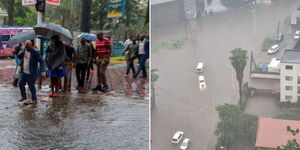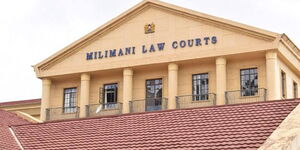With the country currently experiencing heavy rains, it's natural for Kenyans to heavily depend on electric water kettles and jugs in response to the cold weather conditions.
These electrical devices are commonly employed for preparing tea or boiling bathing water.
Notably, electric water jugs are favoured by Kenyans for their convenience, typically taking only 3-5 minutes to boil water.
Despite the preference for these electrical devices during cold seasons, users are exposed to certain risks stemming from common mistakes made during their usage, as detailed below.
Use on Wet Surfaces
Kenyans commonly utilize electric kettles in various areas of their homes, but caution is always urged against situating them near water surfaces.
This precaution is crucial to prevent potential short-circuits and electric shocks, particularly when the cables' wiring is exposed. If the cable is found to be faulty, replacing it with a new one is strongly recommended.
During the rainy season, additional care should be taken to avoid placing kettles near windows.
Raindrops can pose an added risk and contribute to the potential for electric shocks in homes.
Thus, it's advisable to exercise prudence in kettle placement, considering both the proximity to water sources and the weather conditions, to ensure the safety of users.
"Please ensure that electrical appliances such as lamps and switches that are close to windows and doors are secured and kept dry.
"Don’t forget to check seeps and cracks in ceiling or walls. If found, immediately repair the leaks to avoid getting electrocuted," Bajaj, an electrical manufacturing company advises.
Storage
Most people often place the kettles directly on bare surfaces such as floors which usually get cold during rainy or cold seasons.
Such moisture can get into the inner component of the kettle which is located at the bottom of the kettle. Moisture leads to condensation and makes the kettle faulty.
In such incidents, users are forced to get a replacement or take the appliance for repair.
"It is normal if there are a few drops of water on the base of the kettle you can wipe them off with a soft cloth or piece of paper.
"If the condensation of droplets on the base of the kettle continues to increase and becomes more than a few droplets, then your kettle might have a leakage problem," renowned electrical company Philips notes on its website.
Alternatively, one can place a table mat on the floor before placing the kettles on top.
Outdoor Usage
Electric kettles are designed for indoor use.
Wet conditions can pose significant electrical hazards.
While one can use the appliances during the day, people often forget to return the devices to the house.
In the process, rain might pour and make the cables wet which can lead to electric shocks when powered on.












